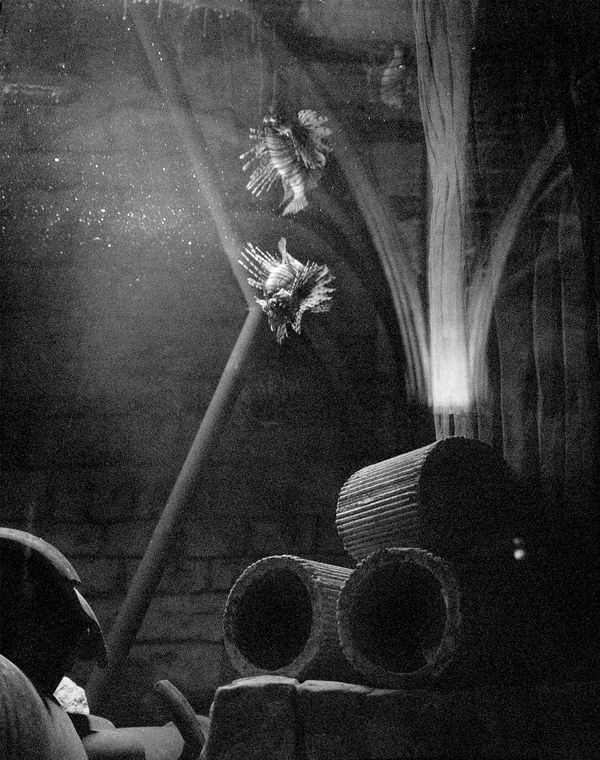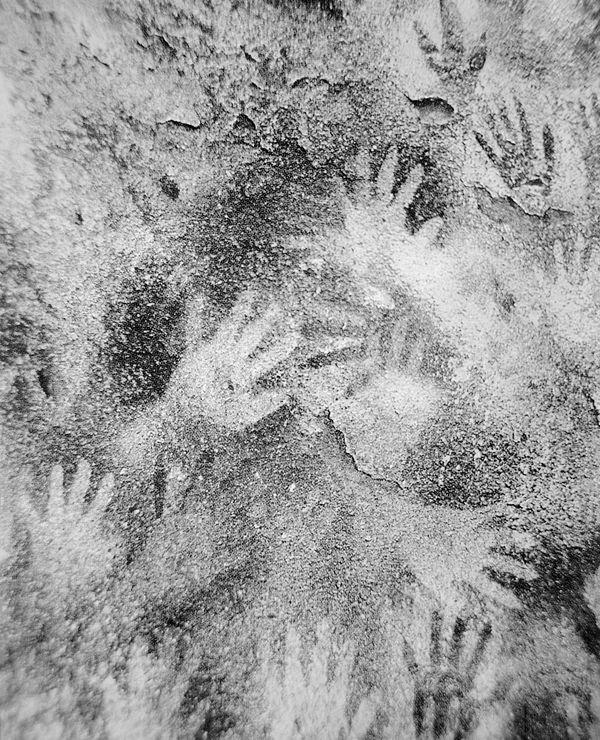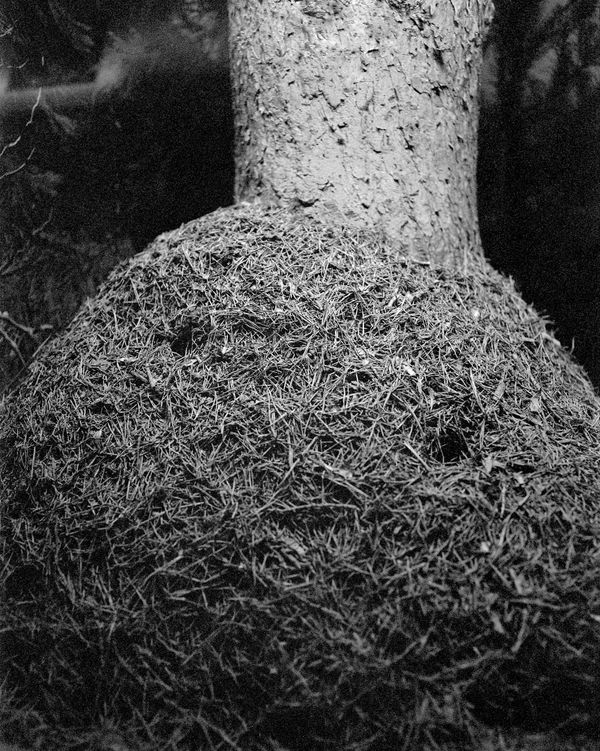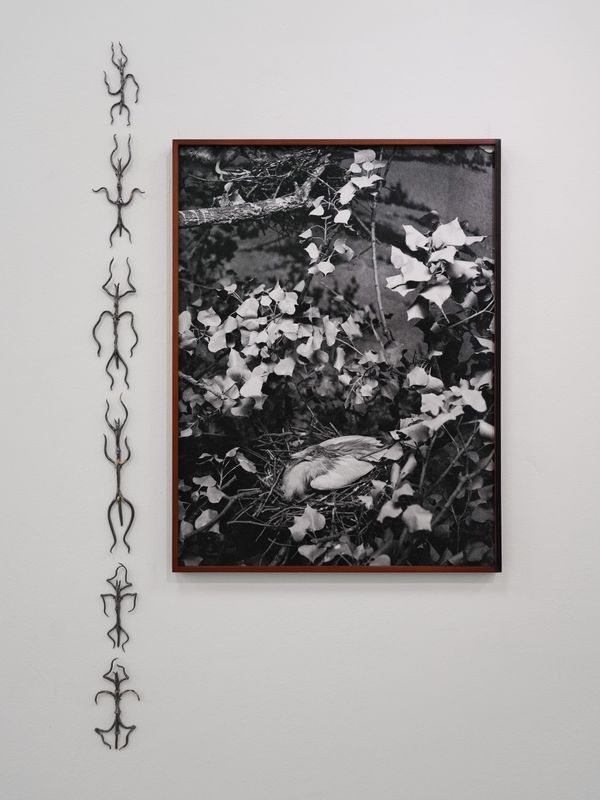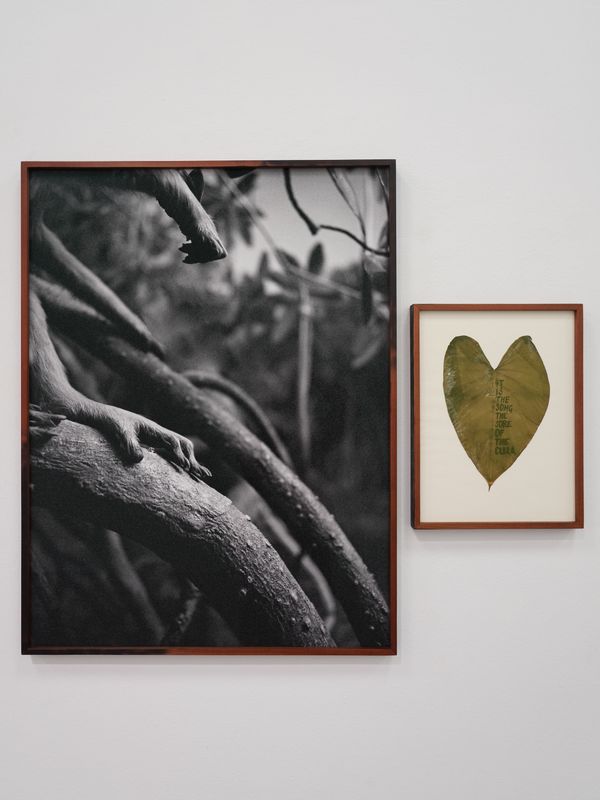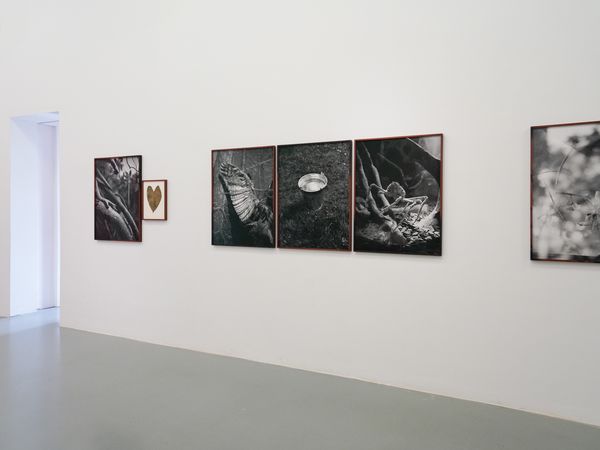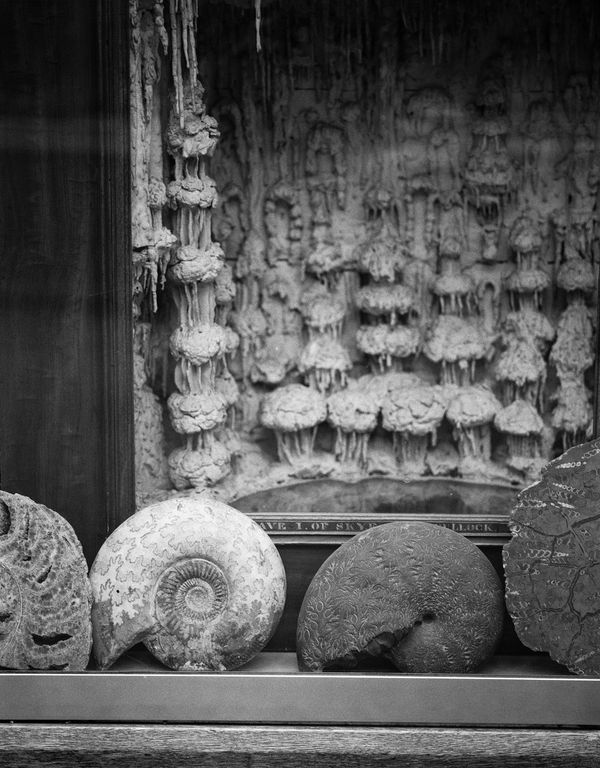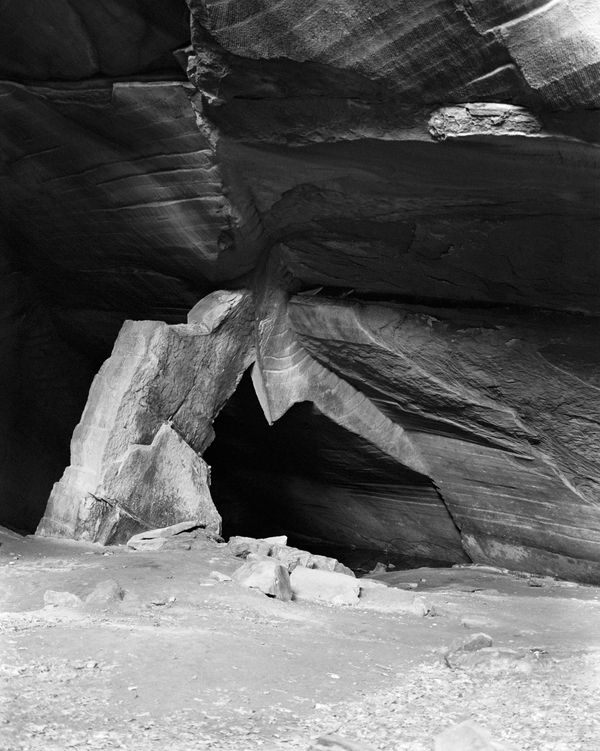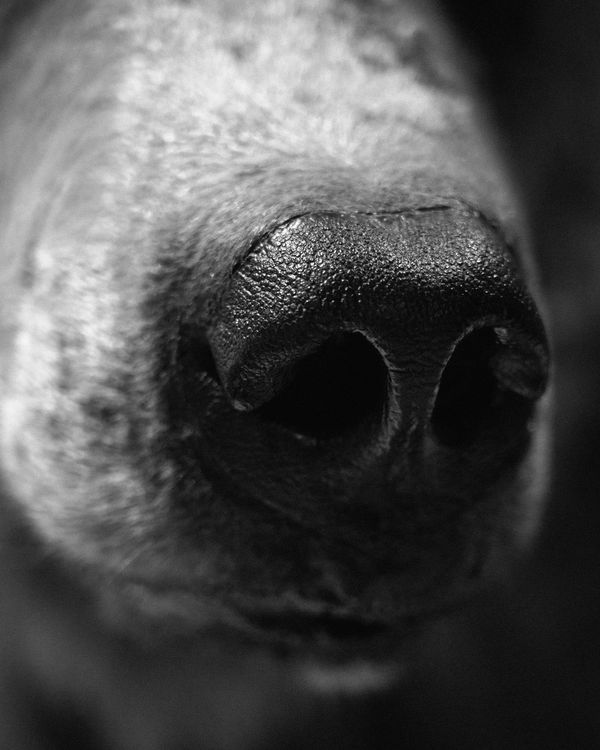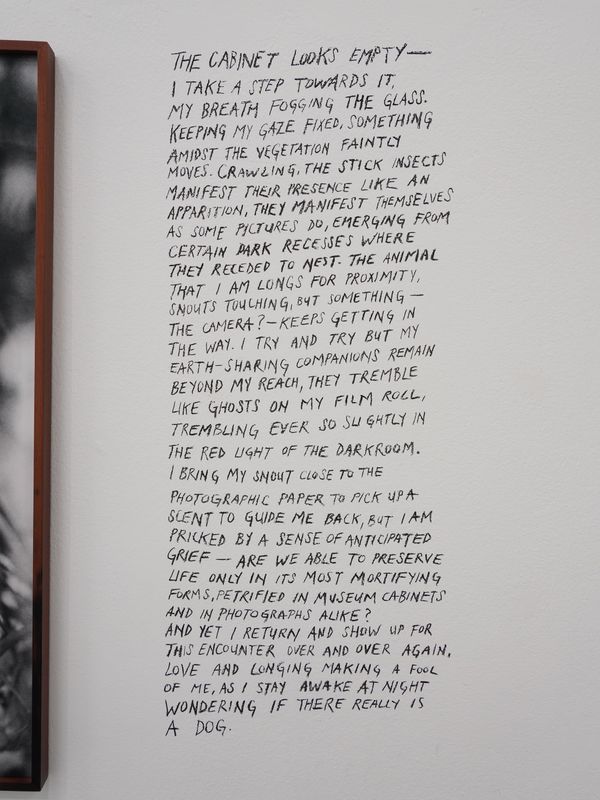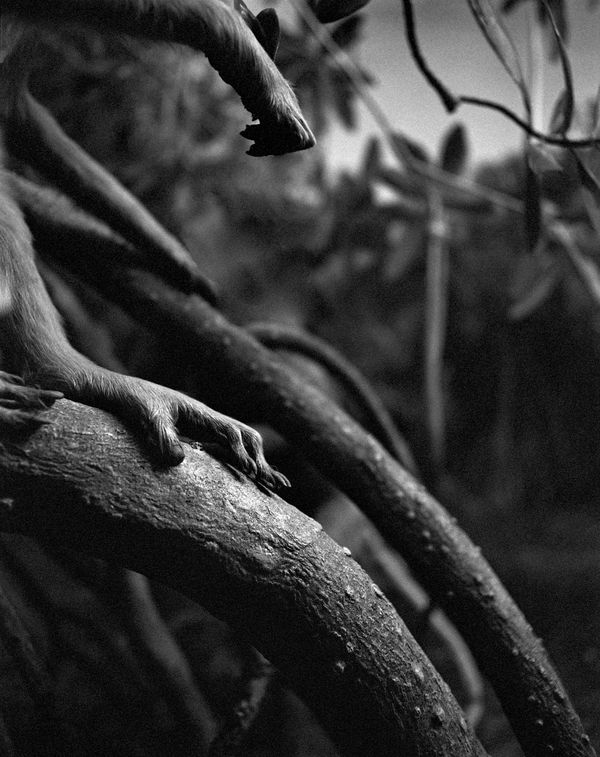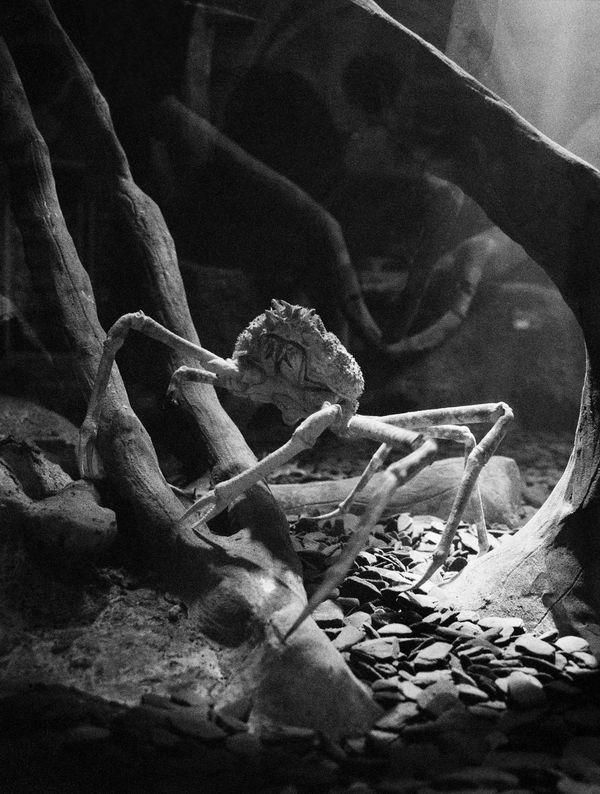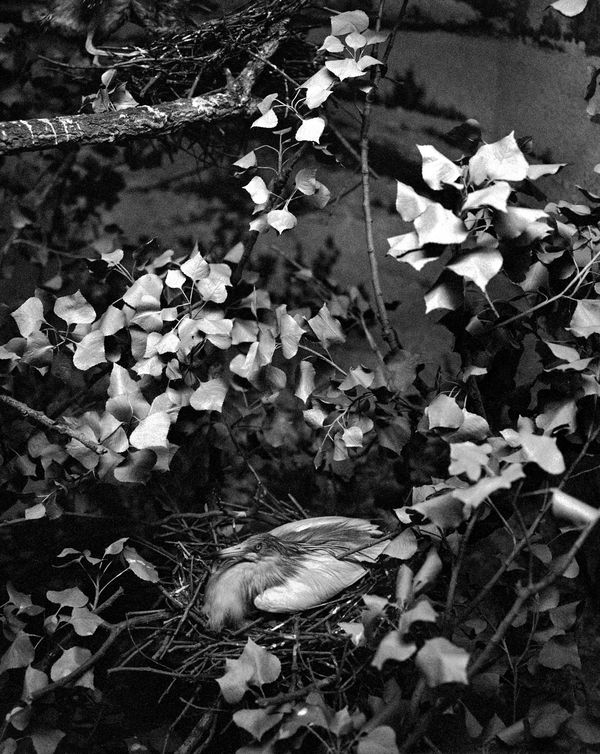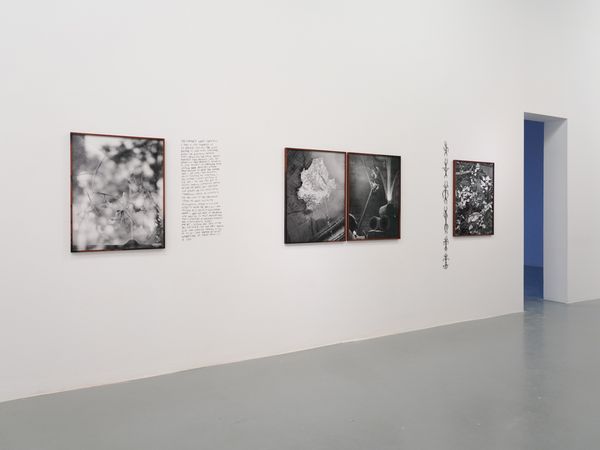All Things Laid Dormant
-
Dates2020 - 2024
-
Author
-
Recognition
-
Recognition
All things laid dormant questions our relationship to non-human others in times of extinctions, creating a space in which to experience the dramas of encounter and recognition, moving between closeness and distance, life and death, love and longing.
The cabinet looks empty — I take a step towards it, my breath fogging the glass. Keeping my gaze fixed, something amidst the vegetation faintly moves. Crawling, the stick insects manifest their presence like an apparition, they manifest themselves as some pictures do, emerging from certain dark recesses where they receded to nest. The animal that I am longs for proximity, snouts touching, but something — the camera? — keeps getting in the way. I try and try but my earth-sharing companions remain beyond my reach, they linger like ghosts on my film roll, trembling ever so slightly in the red light of the darkroom. I bring my snout close to the photographic paper and sniffle to pick up a scent to guide me back, but I am pricked by a sense of anticipated grief — are we able to preserve life only in its most mortifying form, petrified in museum cabinets and in photographs alike? And yet I return and show up for this encounter over and over again, love and longing making a fool of me, as I stay awake at night wondering if there really is a Dog.
How can we relate to our non-human others in times of extinctions knowing, as we must, that we live among the ruination of others? Whilst living beings are bound in ecological communities of life and death, with life making and unmaking itself in cycles of renewal, the man-made mass destruction at play in the environmental catastrophe attacks the generative qualities of death, and carries the implication that the death of animals, people and environments is morally irrelevant. All things laid dormant relies on the ambiguities of the photographic medium - which is both a medium that brings us into contact and fosters closeness, and an barrier placed between the body and the world - to create a space in which to experience the dramas of encounter and recognition, moving between longing and grief. The movements between presence and absence, life and death, proximity and distance, contact and loss of contact, that play out in the series turn theoretical 'either/ors' in an experience of coexisting 'both/ands', entering in a sort of call-and-response with the world. As proposed by Deborah Bird Rose, the longing for others, the longing to reach out and to touch, can be understood as a call to others in a world in which living beings are constantly calling and being called, coming into encounter, and bringing the self and the other into mutuality.
Within All things laid dormant space of these encounters is most often the Natural History Museum, but whilst animals in Natural History Museums represent ideal 'types' that stand for entire species in a taxonomic categorisation of life, encountering them through photography we encounter them in their unique subjectivities: the owl (for example) is not the idea of an owl entering our philosophical enquiries, but a very real, unique and specific owl-subject, and an interrupted life. It is this encounter with subjectivity, happening with a recognition of our mutual vulnerability and mutual mortality, that prepares the groundwork for an Earth-based solidarity that embraces our closeness and our shared fate as mortal critters.
All things laid dormant is one of seven finalists of Giovane Fotografia Italiana | Premio Luigi Ghirri, and is the winner of FE+SK Book Award 2024. The photobook will be presented during the opening days of Fotografia Europea 2024.



